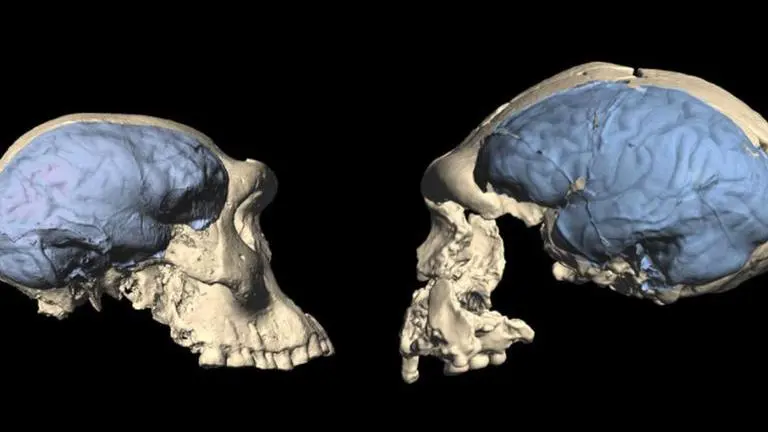Updated 11 April 2021 at 17:49 IST
Modern human brains evolved as far back as 1.7 million years ago, study finds
Human brain’s cerebral gyri and sulci, vascular structures surrounding the brain, and the critical endocranial region reorganized 1.7 million years ago.
- Science News
- 3 min read

The modern human brain developed nearly 1.5 to 1.7 million years ago as a result of frontal lobe reorganization in great apes from Africa and Western Asia (Dmanisi), a new search has found. Using computed tomography, researchers at the University of Zurich found that the human-like brain was relatively young and was formed after human lineage ‘Homo’ arose roughly 2.8 million years ago. In the study, researchers from the University of Zurich (UZH) in Switzerland also elaborated on the direct physical evidence for the actual course of brain evolution, saying “brains do not fossilize”, and its evolution comes from “natural or virtual fillings of fossil hominin braincases, so-called endocasts.
In the study published on Saturday in the Journal Science, scientists explained that the modern brain’s complex but spatially reliable pattern changed over the course of several years. The human brain’s cerebral gyri and sulci, as well as vascular structures surrounding the brain, and the critical endocranial region that holds key information about the frontal lobe reorganized. “Uncertainties also exist regarding the evolutionary reorganization of the parieto-occipital cortex,” University of Zurich researchers stated, after studying the skulls of Homo fossils that lived in Africa, Georgia, and the Java in Indonesia 1 to 2 million years ago.
[Topographical relationships between neurocranial and brain structures on endocasts of great apes and humans. Credit: Journal Science]
[Endocranial organization of the Dmanisi crania. Credit: Science Journal]
Advertisement
Adept at performing 'complex cognitive tasks'
While the primitive human brain was hardly large or modern some 1.7 million years ago, the primitive human populations Homo erectus that migrated out of Africa were adept at performing complex cognitive tasks, such as language communication, social thought structure, and tool use for hunting or food gathering.
Scientists compared the outside skull structure of "prehistoric" or "modern" brains by studying the endocasts of 81 chimpanzees, 27 bonobos, 43 gorillas, and 32 orangutans, as well as 110 modern humans. Researcher Marcia Ponce de León, a paleoanthropologist at the University of Zurich told Live Science that his team was able to quantify brain-endocast relationships in living species by employing advanced technologies to study brain structures. Scientists conducted CT scans of fossilized skulls to analyze the vascular structures of the brain in detail and saw an “evolutionary shift”. For example, a backward shift of the precentral sulcus and Broca region’s realignment to the front indicates that the modern brain evolved in its cognitive capabilities.
Advertisement
[Endocranial shape variation in fossil hominins, great apes, and humans. Credit: Science Journal]
(Image Credit: Unsplash/@natcon773)
Published By : Zaini Majeed
Published On: 11 April 2021 at 17:49 IST



